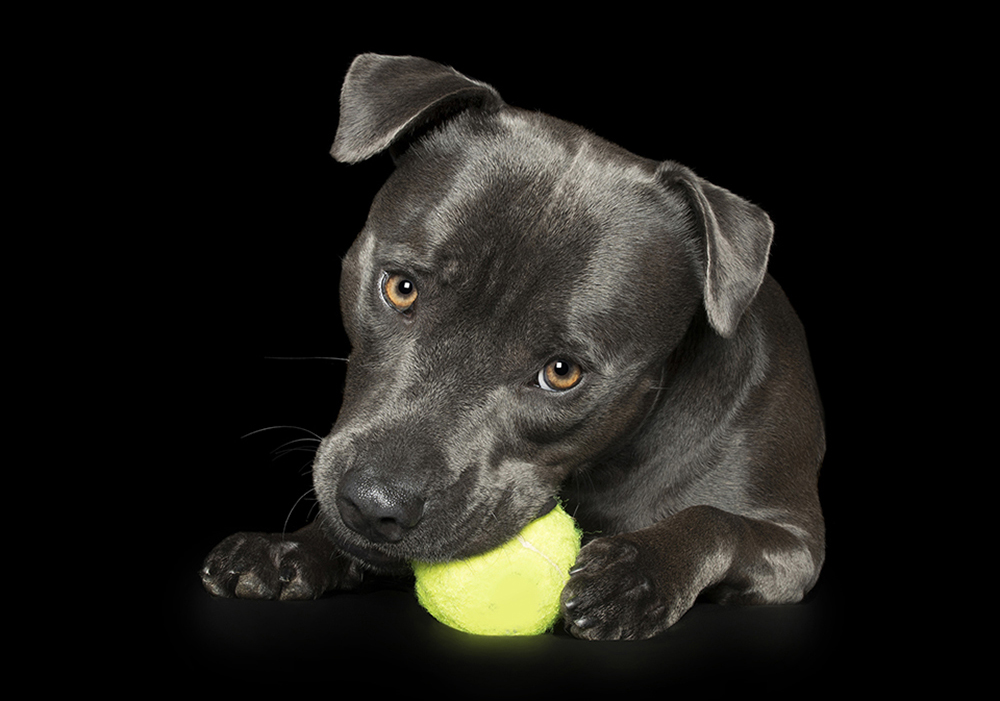Written by
Australian Dog Lover
13:27:00
-
0
Comments
We decided to have chat with Alex Cearns, a world renowned pet and animal photographer from Houndstooth Studio to seek her advice and improve the quality of our photos. She photographs over 850 beloved pet dogs each year in her Perth studio and on her global travels the natural focus of her lens is always the local dogs.
Alex lives with her two rescue dogs, Pip and Pixel, and it’s safe to say she is a crazy dog lady, with dogs being her favourite animals. “To me, dogs are love and light. They are always joyous and give so much back to us”, she says.
“They are our best friends and our loyal companions, always pleased to see us and happy for each day they get to spend with us. They are pure of heart and just want to please. Nothing makes me smile more than spending time with my dogs and laughing at their zany, adorable antics. Photographing them is something I enjoy as I get to preserve special memories of our time together.”
Alex shares her top five dog photo tips and tricks to help you take some fabulous pooch pics plus some advice on how to photograph rescue dogs at a shelter.
Tip No.1: Fun and Frivolity
I will start with this tip first because it really is the most important of them all. Nothing is worth doing if it’s not fun!
The simple key to relaxed and happy pooch pics is to create an environment where your pooch can be relaxed and happy.
Making sure your dog feels safe and at ease is the key to crafting wonderful portraits. Dog’s moods reflect in their faces and body language and by making their session a positive and fun experience they will see their photo session as an adventure, and reward you with big smiles and cheerful energy.
If your dog’s interest starts to fade, or they just aren’t up for it on the day, you can always put your session off to a time when your pet is feeling more playful. Just like people, some dogs are active in the mornings, while others prefer to be up and about in the afternoons.
Choose your dog’s optimum activity time and use it to your photo taking advantage. Try to avoid posing them too much or overly controlling them, as the general rule is, the more you try to pose them, the more they will do the exact opposite of what you want.
If you let them have free reign they will be more relaxed and you will be able to capture their true personality.
Tip No. 2: Toys and Treats
Most dogs are won over by either toys, or treats – or both!
Once you decide which motivator your dog will be most responsive to, use that to get his attention. If you wave a treat under your dog’s nose then pull it upwards, chances are he will look up at you and you can use those precious seconds where he is focused on the treat, to get your shots.
Likewise, if a squeaky toy or tennis ball is his thing you can hold it near him to get him interested in it and then snap away while he is intently waiting for you to throw it.
Be sure to offer regular rewards, otherwise you may find your pooch’s attention starts to wane. If your dog is particularly active, give them a toy to play with or a treat to chew on to keep them settled.
Tip No. 3: Timing and Anticipation
Waiting until that split second moment of a perfect photo opportunity presents itself requires anticipation, then timing.
Once you see the shot, grab it as quickly as you can! This is something you will get faster at, the more you practice, and the development of digital cameras means you can take as many shots as you need to in order to get the photo you are after.
Learn as much as you can about your dog’s behaviour and habits, and spend time observing them before you start snapping. Do they tilt their head when you make a certain sound? Do they do tricks on command?
You can start to plan their response based on what you ask them to do for you, like shake hands or rolling over. These quirky antics are fabulous to capture with your camera, and will lead to distinct images of your dog.
Tip No. 4: Be Patient
Patience was the first thing I had to learn when I started photographing animals and it’s a crucial factor when taking portraits of your dog.
Repeating movements and words calmly and gently creates a chilled atmosphere for your dog.
If you speak your commands in a happy, light tone you can encourage your dog to focus on you and catch those split second photographic moments. I like to think of patience in dog photography as a three step process.
1) Calmly wait until your pooch subject does what you want
2) Take a burst of images to get “the shot”
3) If you miss the right moment, go back to step 1 and repeat
Tip No.5: Perspective and Backgrounds
Be creative and experiment with different perspectives, angles and vantage points. There aren’t really any hard and fast composition rules with photography – sometimes the most interesting images are off centre or a bit quirky.
Dogs are closer to the ground than we are, so take a series of images while lying on the ground and shooting from their point of view.
Or consider taking photos directly at their eye level while they are sitting up, or shoot from above, pointing the camera straight down at them. You even crop parts of them out by zooming in for a close up nose shot, or detailed eye image.
Don’t overlook paws, tails and ears too for an abstract feel.
Be sure to check your background for objects beside or behind your subject.
Chairs, people, rubbish bins, light posts, other dogs (to name but a few) can all ‘photo bomb’ your subjects and are things you need to watch out for. You can move people and other dogs out of the way – with the inanimate objects you can change the angle of your shot or move your dog elsewhere to avoid getting these elements in your image.
Interesting features that add something to your image make for a great shot, whereas unwanted objects or clutter can be distracting. I try to go for clean and simple backgrounds like green grass or blue sky, a nice park bench, or patterned surface.
If your pooch won’t sit still, position them on a sturdy chair or bench where they feel comfortable. This will buy you valuable seconds as they won’t be able to race off as quickly as they can when they are on the ground.
Most of all, the time you spend with your dog should be fun and photographing them is no exception. Make your photo session light and easy, and enjoy yourself. The experience is just as important as the end result.
Giving Back to Shelter Dogs
A wonderful way to give back to dogs in need, and to hone your photography skills, is to volunteer your time a local dog shelter. When working with rescue dogs, there are a few things to keep in mind.
1) Follow the steps above to engage your canine subject.
2) Enlist the assistance of a shelter staff member or volunteer to handle the dogs for you.
3) Choose a photography location in a safe, quiet area, away from distractions.
4) Be mindful that some dogs have suffered abuse in the past and may be nervous around strangers, or may be fearful when you raise your camera.
5) Move slowly and deliberately, keep your voice low and be non threatening with your body language.
6) Let the dog settle and get used to you before you start photographing.
7) You will often be working with dogs who are still wearing their collars and leads on, so be prepared to photo shop these out afterwards if you prefer the ‘naked’ look.
If you'd like to see how all these tips are expertly executed, you should check out Alex’s latest book ‘Perfect Imperfection – Dog portraits of resilience and love’
In this inspiring portrayal of difference, Alex captures the intrinsic beauty and spirit, the sweetness, resilience and strength of 60 perfectly imperfect dogs.
Be sure to check your background for objects beside or behind your subject.
Chairs, people, rubbish bins, light posts, other dogs (to name but a few) can all ‘photo bomb’ your subjects and are things you need to watch out for. You can move people and other dogs out of the way – with the inanimate objects you can change the angle of your shot or move your dog elsewhere to avoid getting these elements in your image.
Interesting features that add something to your image make for a great shot, whereas unwanted objects or clutter can be distracting. I try to go for clean and simple backgrounds like green grass or blue sky, a nice park bench, or patterned surface.
If your pooch won’t sit still, position them on a sturdy chair or bench where they feel comfortable. This will buy you valuable seconds as they won’t be able to race off as quickly as they can when they are on the ground.
Most of all, the time you spend with your dog should be fun and photographing them is no exception. Make your photo session light and easy, and enjoy yourself. The experience is just as important as the end result.
Giving Back to Shelter Dogs
A wonderful way to give back to dogs in need, and to hone your photography skills, is to volunteer your time a local dog shelter. When working with rescue dogs, there are a few things to keep in mind.
1) Follow the steps above to engage your canine subject.
2) Enlist the assistance of a shelter staff member or volunteer to handle the dogs for you.
3) Choose a photography location in a safe, quiet area, away from distractions.
4) Be mindful that some dogs have suffered abuse in the past and may be nervous around strangers, or may be fearful when you raise your camera.
5) Move slowly and deliberately, keep your voice low and be non threatening with your body language.
6) Let the dog settle and get used to you before you start photographing.
7) You will often be working with dogs who are still wearing their collars and leads on, so be prepared to photo shop these out afterwards if you prefer the ‘naked’ look.
If you'd like to see how all these tips are expertly executed, you should check out Alex’s latest book ‘Perfect Imperfection – Dog portraits of resilience and love’
In this inspiring portrayal of difference, Alex captures the intrinsic beauty and spirit, the sweetness, resilience and strength of 60 perfectly imperfect dogs.
They adapt to their unique bodies without complaint, they survive with determination and they live with joy.
This is a book for anyone who's ever loved a dog and it's available now online or at all good book retailers. To learn more, please visit:















No comments
Post a Comment